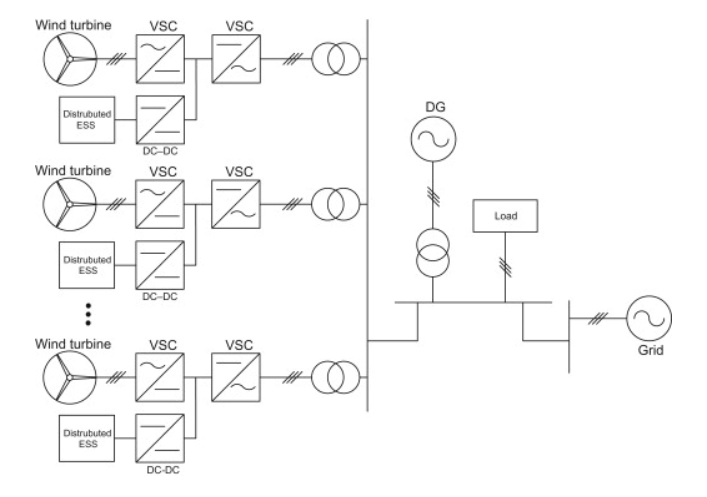An individual distributed ESS is smaller than an aggregated ESS, because it only handles a single (or a small group) renewable generation unit. Similar to aggregated ESSs, the major function of generator side distributed ESS is to smooth the output of renewables. The distributed ESSs are installed on-site with each renewable generation unit, as illustrated in below figure.

A distributed ESS is usually connected to the DC link of the renewable generation unit behind the grid-side inverter. For a wind inverter, the ESS connected to the DC link in the back-to-back converter. For solar PV generation, the ESS is connected to the output of PV through the DC/DC converter. In the above figure, the distributed ESS is able to help the wind turbine inverter to have a stable DC link voltage, so the inverter can work properly. The distributed ESS outputs the desired power to compensate the fluctuation of renewable generation.
As mentioned before, a distributed ESS is not as powerful as an aggregated ESS for mitigating the fluctuation of renewables, but the distributed ESS is easier to be expanded and maintained.
If you have any requirements or any kind of query regarding the Energy storage solutions for your desired applications, feel free to communicate with our dedicated team at any time at marketing@everexceed.com.
หมวดหมู่
ล่าสุด โพสต์
สแกนไปที่ WeChat:everexceed
